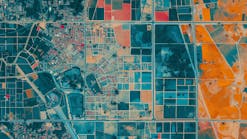Heading into what is projected to be an above-average hurricane season, FEMA urges residents to prepare before the height of hurricane season.
“My message to the public is this: identify your risks, have a plan and act today. The best way to help yourself, your family and your community recover after a disaster is by taking steps now, before it’s too late,” said FEMA Administrator Deanne Criswell. “Remember, just because your area was not touched by a hurricane in the past few years, does not mean it will be spared this time around. I encourage everyone to download our new and improved FEMA mobile app and start making a plan today. But most importantly, pay attention to your local officials and emergency managers for guidance on when and if to evacuate.”
FEMA recently announced an update to its mobile app -- in English and Spanish -- to help users take charge of disasters. The app is available for download on iOS or Android. Watch our FEMA App video and visit the FEMA App webpage for additional information.
Disasters can be expensive, but preparedness doesn’t need to be. Everyone can take several steps now with little to no cost that will help prepare for tropical systems. FEMA also has several resources available to help anyone who wants to design or update their preparedness plans:
- Anyone can visit Ready.gov, or the Spanish version Listo.gov, today for helpful tips and resources in their preparedness actions.
- The Ready.gov/hurricane page also gives specific guidance to prepare for tropical systems.
- FEMA’s Ready Campaign recently published a low and no-cost preparedness webpage with tips to help preparedness for a variety of disasters and emergencies, including:
- Building your emergency supply kit over time, starting with items you may already have in your home -- like a flashlight, extra batteries, copies of important documents, water and non-perishable food.
- Talking with family or members of your household about where you will go if told to evacuate.
- Storing important documents and items like passports, birth certificates, maps and electronics in a flood-safe place, like a high shelf or upper floor in resealable water-tight plastic bags to help waterproof them.
Additionally, furthering FEMA’s commitment to providing accessible disaster information, the agency updated its Text-to-Shelter feature this year. When there’s an evacuation order issued, users can text “shelter” and their ZIP code to 43362 for a list of nearby shelter locations.
If you have insurance, now is the time to review your policies. Not all policies are the same, so review them to understand what coverage you have. Homeowners insurance does not typically cover flooding, so you may need to purchase flood insurance.
A new FEMA webpage is now available as a one-stop shop to the public about how to protect themselves and their property from the nation’s No. 1 disaster -- flooding. The webpage includes free resources and information to learn about, understand and take action to reduce flood risk.
The FEMA Map Service Center allows visitors to enter a street address to learn more about flood risks their community. Other information includes resources about flood maps, flood zones, flood risk and flood insurance.
There are other multiple resources describing actions the public can take now to protect their property from hazards.
Earlier this year, the agency’s “Before, During and After” podcast sat down with FEMA Administrator Deanne Criswell and National Hurricane Center Director Ken Graham at the National Hurricane Conference. You can listen to the podcast or download a transcript to learn how the agencies collaborate to share vital weather and preparedness information during a storm.






